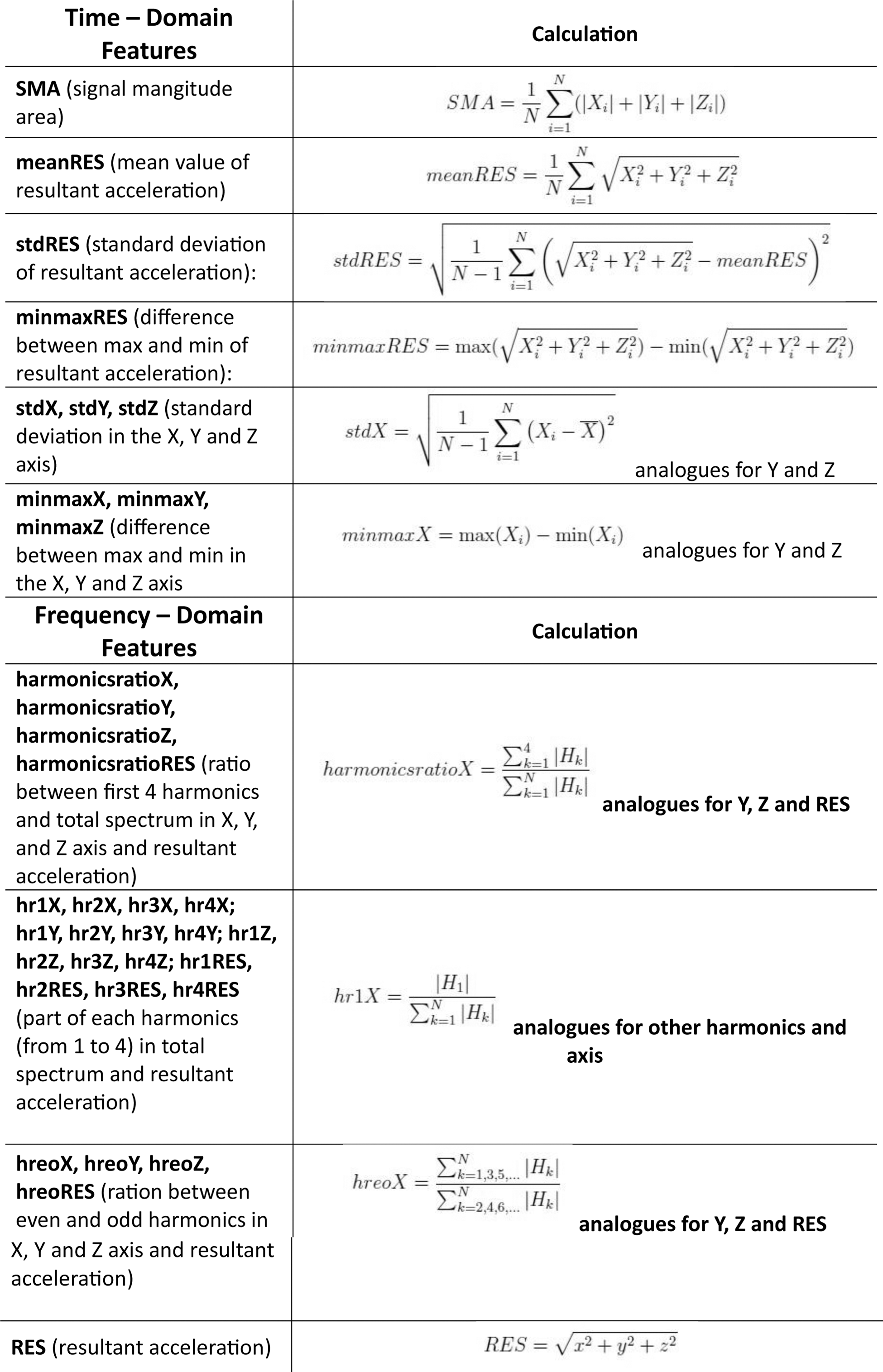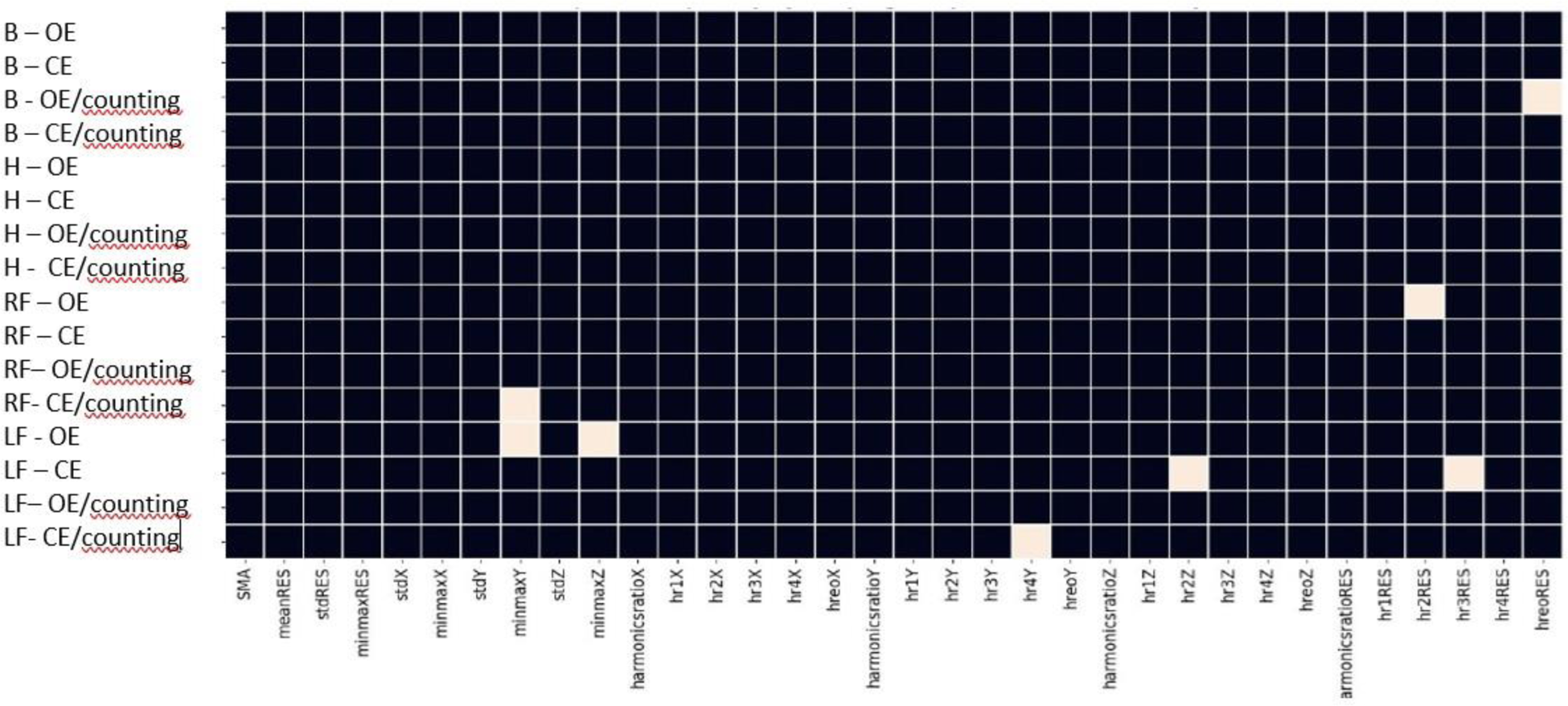

Background: Fibromyalgia (FM) patients often experience postural instability, making it difficult to maintain a stable posture while sitting or standing, which raises the risk of falls [1]. Factors like muscle weakness, impaired proprioception, and chronic pain can prevent them from effectively controlling and adjusting their posture. Additionally, cognitive decline, influenced by symptoms such as pain, fatigue, and depression, further worsens motor function. In relation to daily activities, the dual-task paradigm serves as a proxy for everyday functioning, offering insight into the interaction between motor and cognitive abilities. Wearable sensor devices, such as accelerometers, can be used to gather data during various tasks. However, there is limited information on their use in fibromyalgia patients within this context.
Objectives: To find the potential digital biomarker for fibromyalgia recognition through accelerometry-based assessment of static balance in dual-task settings.
Methods: The 27 non-treated primary fibromyalgia (FM) patients (3 M, 24 F, 46,8±8.75 y) and 27 healthy age and gender-matched subjects (HC) were recruited for this cross-sectional study. All participants were wearing 4 tri-axial accelerometers (X, Y, and Z axis): one over the L4-L5 junction (spine), over the right anterior superior iliac spine (hip) and both ankles. Patients’ static balance characteristics were assessed using a modified Romberg test across four conditions (open eyes or closed eyes with an added cognitive task that involved counting days or months backwards). All test exercises were initiated and completed using the smartphone application. Raw data was sent through the Wi-Fi connection from accelerometers to the tablet and then to the central server for further analysis. After signal processing, time – and frequency – domain features (Figure 1) were analyzed and used for discrimination between FM and HC subjects.
Results: As shown in Figure 2, eight features are significant in distinguishing fibromyalgia (FM) from healthy controls (HC). Among these, three are time-domain features: minmaxY (significant for two sensors in two different conditions) and minmaxZ (significant for one sensor in one condition). The other five are frequency-domain features: hr4Y, hr2Z, hr2RES, hr3RES, and hreoRES (significant for one sensor in one condition). Regarding sensor placement, seven of the eight significant features were recorded from ankle sensors. Dual-task conditions revealed that both open and closed eye conditions (with or without counting) were similarly informative, with four features each. The most significant features were observed in the open-eye condition (three features), while the other conditions provided less information.
Conclusion: The results from this study indicate that the selected features could serve as potential digital biomarkers for identifying fibromyalgia patients. It appears that sensors placed on the feet are more effective for data collection, with no clear advantage between time-domain and frequency-domain features. In terms of dual-task conditions, although we anticipated that closed eyes and counting would provide significant features for distinguishing FM patients, the findings showed that the open-eye condition was the most informative. By combining foot-mounted sensors, the selected features, and the dual-task conditions, this methodology could offer a fast and cost-effective way to assess the motor abilities of FM patients, potentially impacting diagnostic and therapeutic decisions while reducing the frequency of falls. Patients could perform this assessment in their home environment, with the results sent to their physician for further evaluation.
REFERENCES: [1] Núñez-Fuentes D. 2021 Jan 15;11:127. doi: 10.3390/diagnostics11010127.
Time- and frequency-domain features used for analysis

Heat map of significant features (p < 0.05) after the Bonferroni correction
Abb. B – back sensor, H – hip sensor, RF – right ankle sensor, LF – left ankle sensor, OE – open eyes, CE – closed eyes.

Acknowledgements: This work was supported by a voucher (#Q322RSV45) from the European Alliance of Associations for Rheumatology (EULAR). The content is solely the responsibility of the authors and does not necessarily represent the official views of EULAR.
Disclosure of Interests: None declared.
© The Authors 2025. This abstract is an open access article published in Annals of Rheumatic Diseases under the CC BY-NC-ND license (